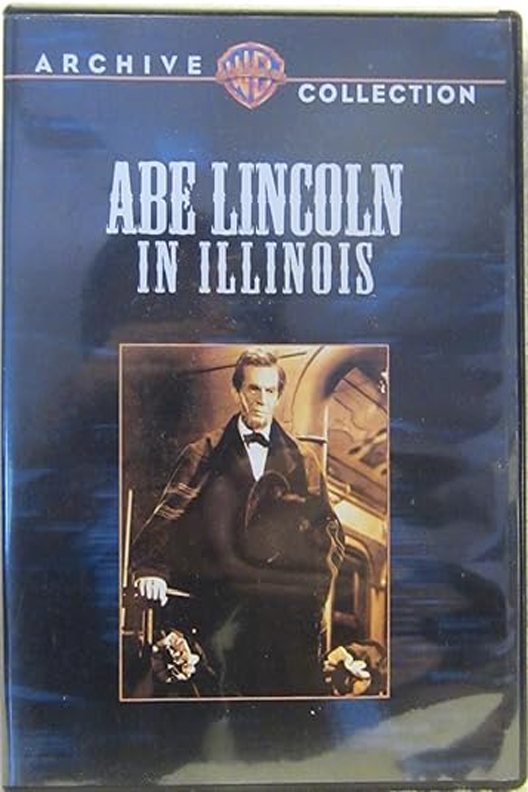In the annals of American cinema, few films have endeavored to capture the early life of one of the nation’s most revered figures, Abraham Lincoln, with the depth and nuance presented in “Abe Lincoln in Illinois” (1940). Directed by John Cromwell and adapted from Robert E. Sherwood’s Pulitzer Prize-winning play, this biographical drama offers a meticulous portrayal of Lincoln’s journey from a humble frontier life to the precipice of the presidency.
Plot Overview
The narrative commences in the early 1830s, introducing a youthful Abraham Lincoln (Raymond Massey) as he departs from his Kentucky home, embarking on a journey that leads him to New Salem, Illinois. Here, he encounters Ann Rutledge (Mary Howard), whose charm and intellect leave an indelible mark on him. Their burgeoning relationship, however, is tragically cut short by Ann’s untimely death, a pivotal event that profoundly influences Lincoln’s personal and professional trajectory.
As Lincoln immerses himself in the fabric of New Salem, his innate leadership qualities and oratorical prowess become evident. Encouraged by peers and mentors, he ventures into politics, securing a seat in the Illinois General Assembly. It is during this period that he encounters Mary Todd (Ruth Gordon), a woman of ambition and societal standing. Their complex courtship culminates in marriage, with Mary playing a significant role in propelling Lincoln toward higher political aspirations.
The film meticulously chronicles Lincoln’s political ascent, highlighting the iconic debates with Stephen A. Douglas (Gene Lockhart) over the contentious issue of slavery. These debates not only elevate Lincoln’s national profile but also underscore his moral and ethical convictions. The culmination of the narrative sees Lincoln’s reluctant yet resolute acceptance of the Republican nomination for the presidency, setting the stage for his departure to Washington, D.C., and the monumental challenges that await.
Performance and Characterization
Raymond Massey’s portrayal of Abraham Lincoln stands as a cornerstone of the film’s acclaim. Having originated the role on Broadway, Massey brings a profound authenticity and gravitas to the character, capturing the multifaceted nature of Lincoln—his humility, introspection, and unwavering resolve. Massey’s performance garnered an Academy Award nomination for Best Actor, a testament to his compelling embodiment of the 16th president.
Ruth Gordon, in her cinematic debut as Mary Todd Lincoln, delivers a performance that is both nuanced and formidable. She adeptly portrays Mary as a woman of depth and complexity, whose personal ambitions and emotional intricacies add layers to the narrative. The dynamic between Massey and Gordon offers a window into the personal struggles and triumphs that shaped Lincoln’s path.
Gene Lockhart’s depiction of Stephen A. Douglas provides a compelling counterbalance to Lincoln’s character. Lockhart infuses Douglas with charisma and political acumen, rendering the ideological clashes between the two figures both engaging and thought-provoking.
Direction and Cinematography
John Cromwell’s directorial approach is marked by a commitment to authenticity and narrative coherence. He skillfully navigates the transition from stage to screen, preserving the essence of Sherwood’s play while leveraging the cinematic medium to enhance the storytelling. Cromwell’s own cameo as John Brown adds a subtle layer of historical context to the film.
The cinematography by James Wong Howe, which earned an Academy Award nomination, captures the essence of the era with meticulous attention to detail. Howe’s use of lighting and composition not only evokes the period’s aesthetic but also accentuates the emotional undercurrents of the narrative. The visual portrayal of the Illinois landscape serves as a backdrop that reflects Lincoln’s internal journey, from the simplicity of rural life to the complexities of political ambition.

Historical Accuracy and Adaptation
While “Abe Lincoln in Illinois” takes certain creative liberties, it remains largely faithful to historical events and figures. The screenplay, co-written by Grover Jones and Robert E. Sherwood, integrates Lincoln’s own words and documented experiences, lending credibility and depth to the portrayal. The film delves into Lincoln’s personal relationships, particularly his connections with Ann Rutledge and Mary Todd, offering insights into how these bonds influenced his character and decisions.
The depiction of the Lincoln-Douglas debates stands out as a highlight, capturing the rhetorical prowess and ideological stakes that defined these encounters. The film presents these debates with a sense of immediacy and relevance, underscoring their significance in shaping public opinion and Lincoln’s political destiny.
Reception and Legacy
Upon its release, “Abe Lincoln in Illinois” was met with critical acclaim for its performances and production values. Despite its artistic merits, the film did not achieve commercial success, recording a loss of $740,000, making it one of the significant financial setbacks in RKO’s history. However, in regions such as Illinois and Indiana, where the film was heavily promoted, it resonated with audiences, becoming the highest-grossing film in many theaters.
Over the decades, the film has been revisited by scholars and enthusiasts for its portrayal of Lincoln’s early years. It serves as a cinematic artifact that reflects the historical narratives and cultural sentiments of its time. The film’s emphasis on Lincoln’s humanity, moral dilemmas, and personal growth offers a counterpoint to the often hagiographic representations found in other works.
“Abe Lincoln in Illinois” stands as a poignant exploration of the experiences and relationships that shaped Abraham Lincoln before his presidency. Through compelling performances, thoughtful direction, and a commitment to historical authenticity, the film invites audiences to engage with the complexities of Lincoln’s character and the formative events that defined his path to leadership. For those seeking a deeper understanding of Lincoln’s early life.